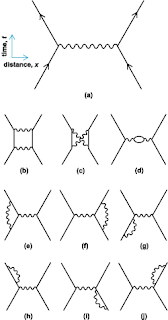
Ten years ago Phil Anderson wrote a really stimulating "Reference Frame" article, Brainwashed by Feynman? in Physics Today.
Anderson gives several concrete examples to stress the importance of non-perturbative effects in quantum many-body theory, whether it is the standard model of particle physics or molecular bonding. Bound states are a prime example of a non-perturbative effect. He also mentions the highly non-trivial (and counter-intuitive) case of the chiral anomaly where the whole Fermi sea matters. Anderson cites Roman Jackiw's Dirac Prize lecture as a beautiful exposition of the relevant physics.
As an aside I think the title is a bit unfair to Feynman. Feynman would have been the last person to "brainwash" anyone and he certainly appreciated the importance of non-perturbative effects. The problem is really people who are enamoured by the success of Feynman diagrams (in their appropriate context) and then apply the formalism when one can't necessarily expect it to work.
I thank Seth Olsen for bringing this article to my attention.




As I usually tell my students, "if you perturbate too much, you will go blind".
ReplyDeleteThis comment has been removed by the author.
ReplyDeleteWell, according to Nathan Isgur's comment to the Anderson's article* Feynman could have been the first one to be misled by his diagrams in public but it took him the time for a laugh of the audience to correct himself and explain why it was dangerous to be
ReplyDelete“brainwashed by Feynman.”
*http://scitation.aip.org/content/aip/magazine/physicstoday/article/53/8/10.1063/1.1310103